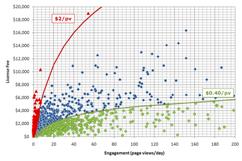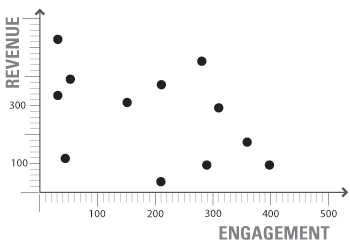
Posted by: Matt Shanahan During the last five weeks, I have written extensively about the Demand Map™, a quantitative lens for digital revenue optimization. The Demand Map™ posts describe how the unit cost of engagement can be calculated (i.e., engagement divided by revenue during the period) and used to identify which licenses or ad orders are incorrectly priced. The chart to the right depicts a example of the Demand Map™. In this chart according to my previous posts, each of the data points could be either a sold license or ad order and the associated engagement. The reality is that the Demand Map™ has more power than just charting licenses and ad orders! Unlocking the true power of the Demand Map™ involves digital […]







